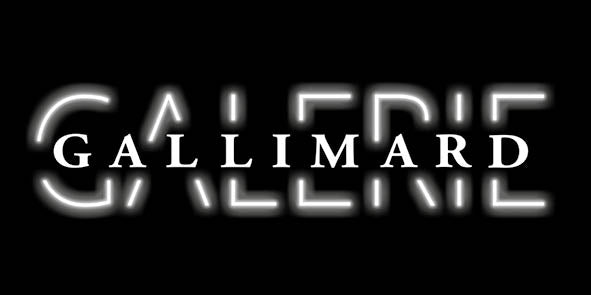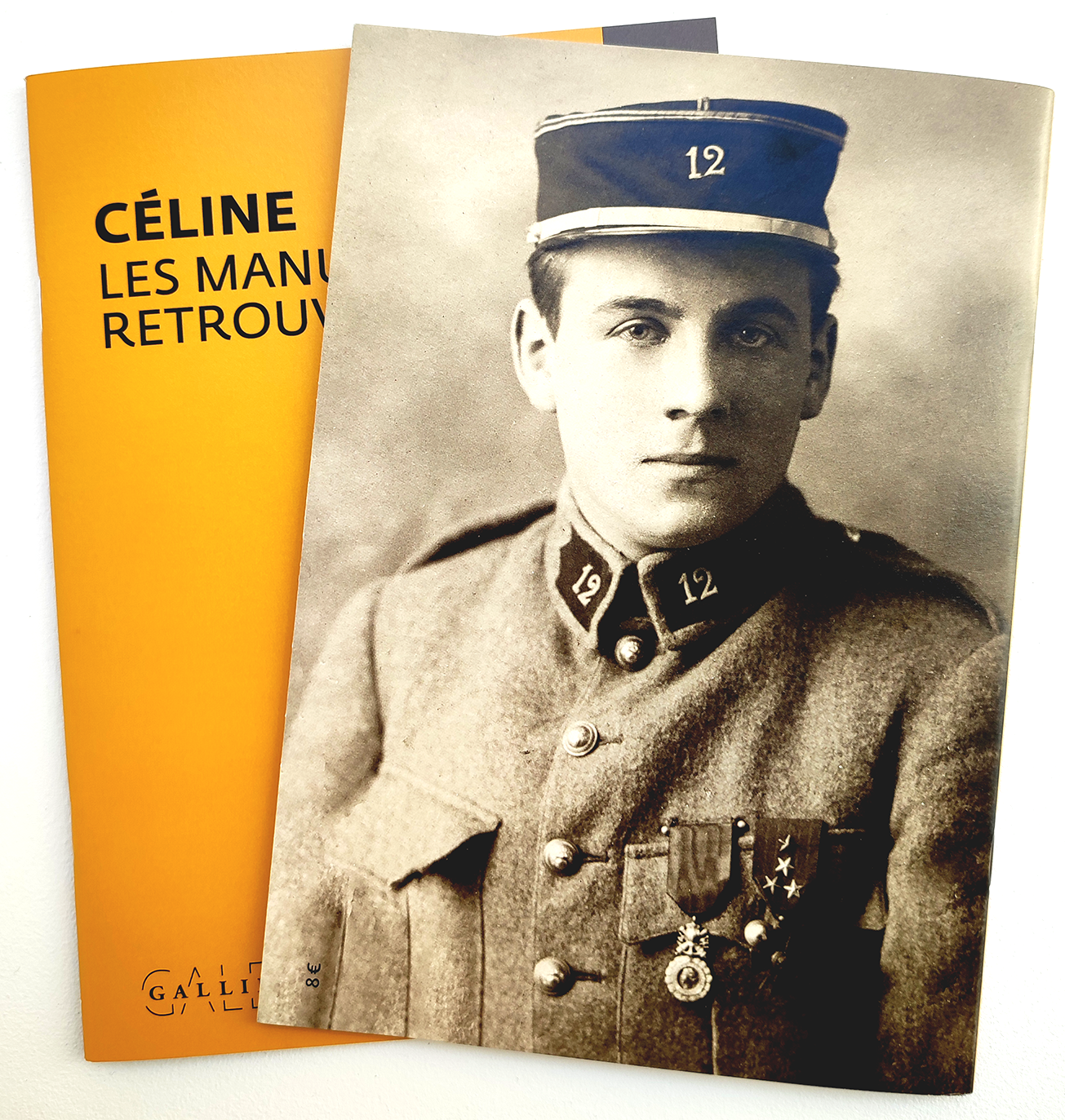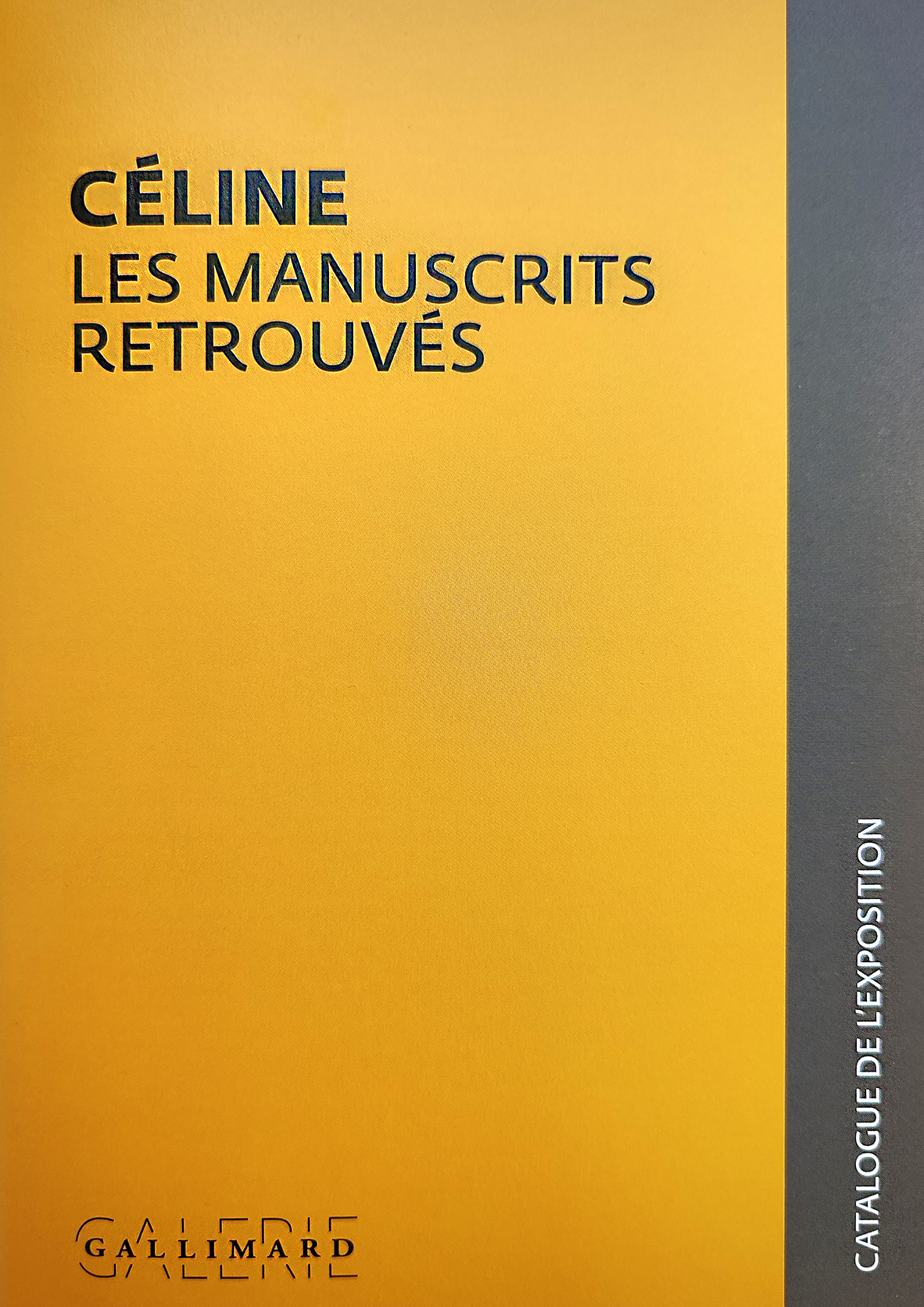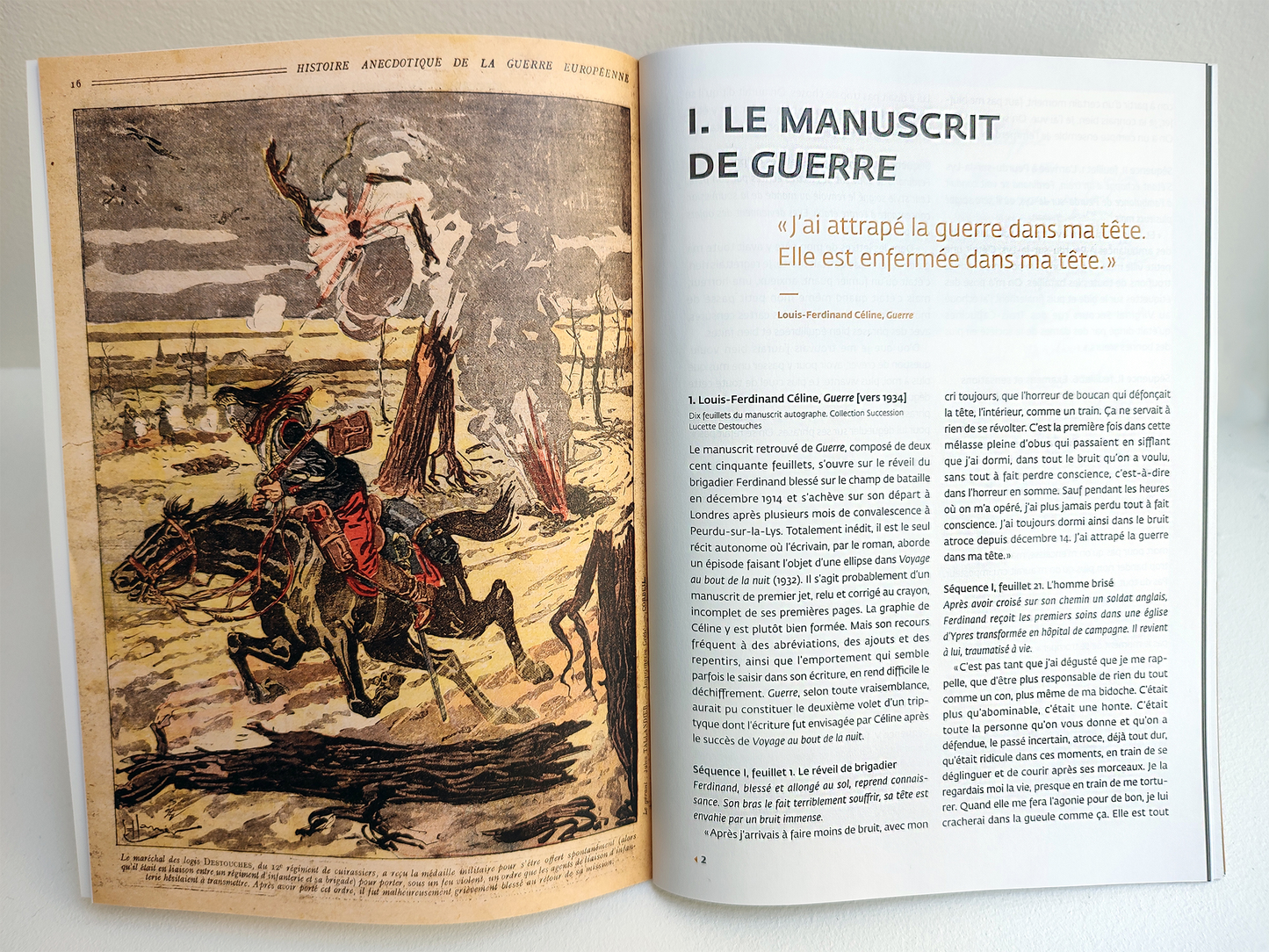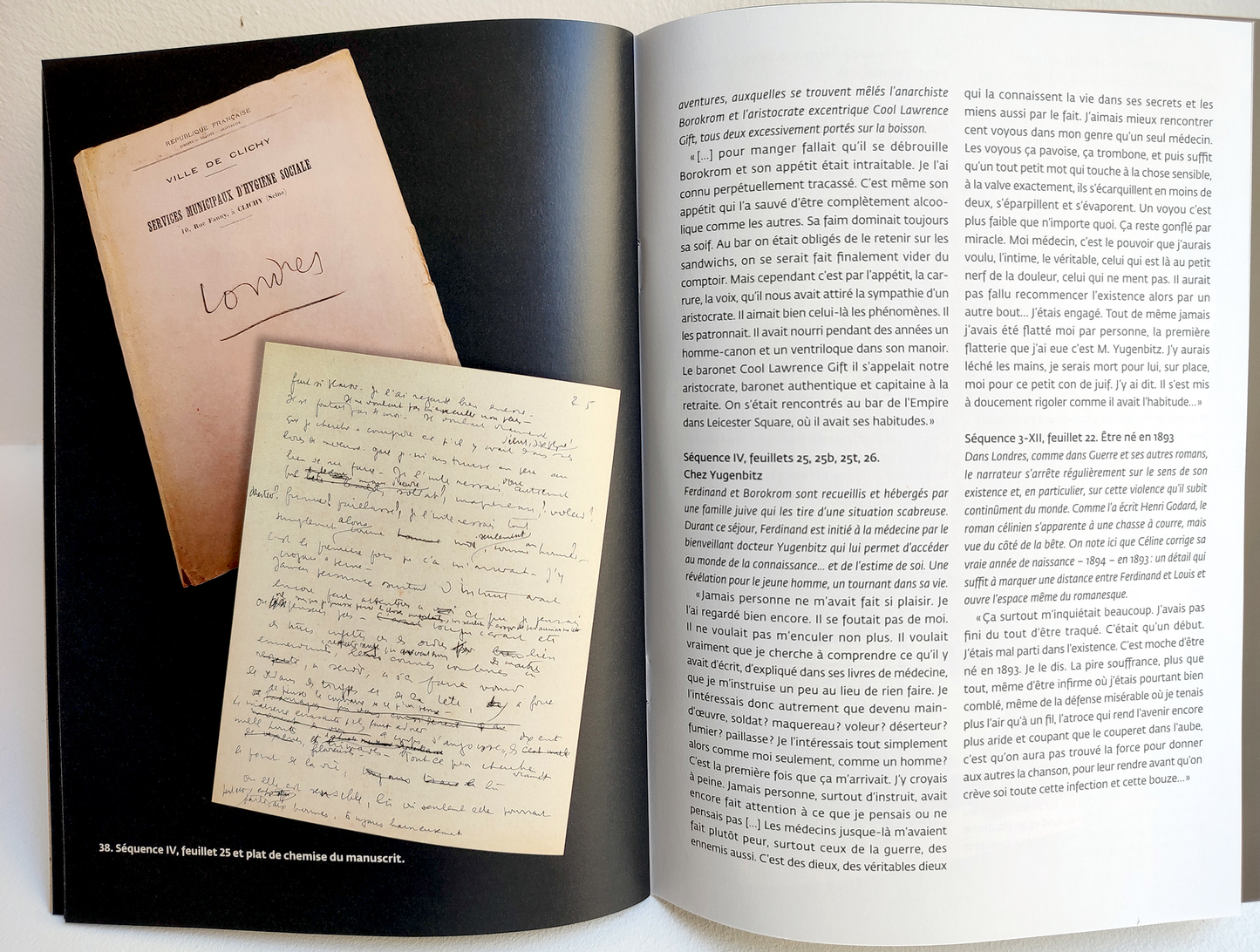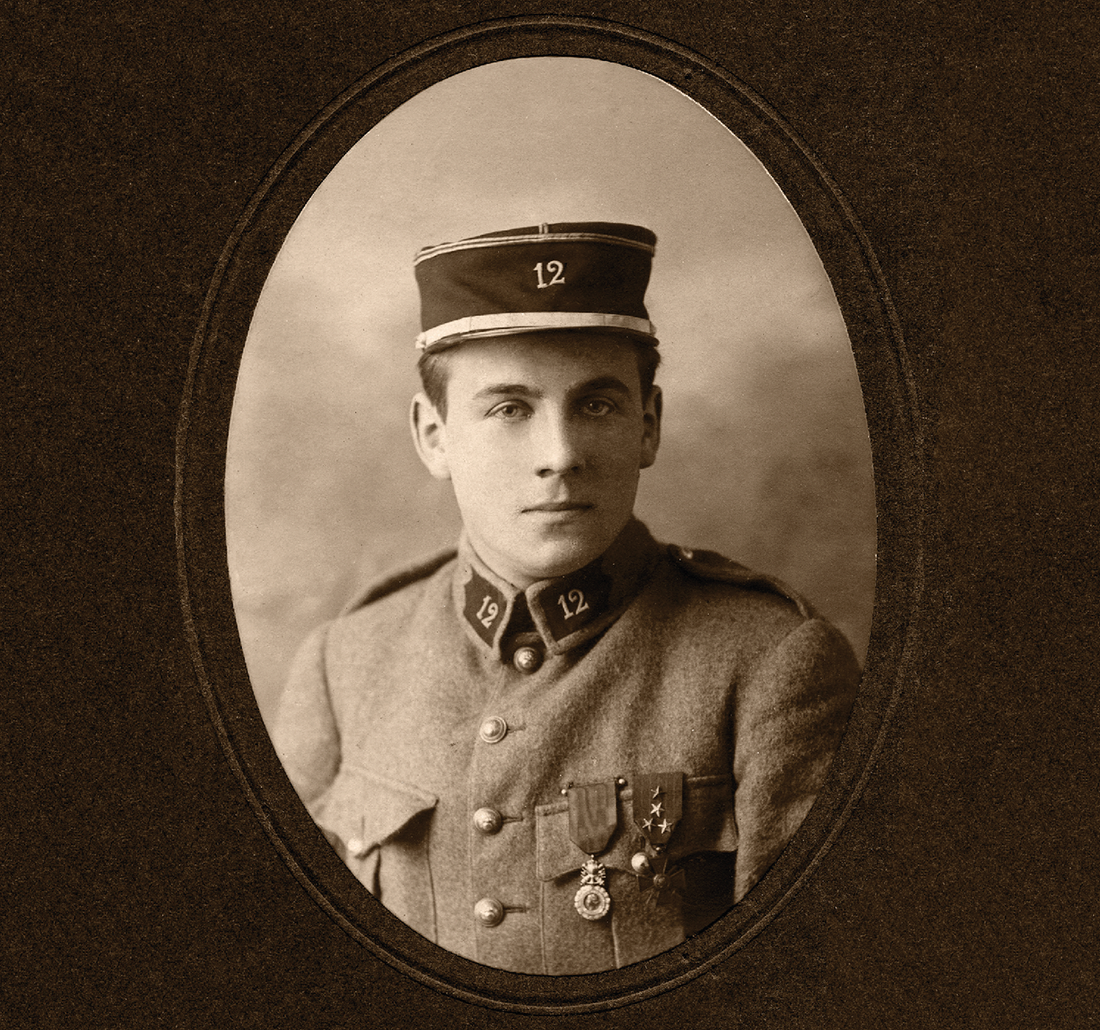
Céline, the manuscripts found
The Galerie Gallimard presents a new exhibition dedicated to the rediscovered manuscripts of Louis-Ferdinand Céline. This exhibition, curated by Alban Cerisier, is offered on the occasion of the publication of Guerre, an unpublished novel by the writer.
On June 17, 1944, feeling threatened as the Liberation approached for his positions during the Occupation, Céline left France with his wife Lucette. The writer left several bundles of manuscripts in his Parisian apartment, which he would later regret had been stolen from him. Recently rediscovered, these exceptional manuscripts, exhibited for the first time, shed light on the literary project that inspired Céline after the publication of Voyage au bout de la nuit in 1932: a large triptych, relating to periods of his life not or barely developed in his first novel – childhood, the war, London. Thousands of unpublished pages bear witness to this enterprise, of which only the first part will be completed with Mort à crédit in 1936. But Céline, and here is the great revelation, had made progress on the other novels, in particular the one evoking the central episode of his life: the experience of the front and his war wound in October 1914. A trauma that would decide the life of a man as well as the literary work to come, the latter alone having the power to reveal what is really at stake in the lived experience.

© Véronique Chovin Collection
The exhibition at the Galerie Gallimard will be an opportunity to present to the public for the first time several remarkable pages taken from the bundles of manuscripts that have been found. The manuscript of Guerre will be particularly highlighted, without neglecting those of Londres, Casse-pipe and of La Volonté du roi Krogold (which will be exhibited with its famous clothes pegs).
More intimate documents (letters, postcards, period prints, portraits, etc.) from the writer's archives will shed light on the biographical sources of the literary work, in particular on the links between Louis Destouches and his parents, on his military training in Rambouillet and on his convalescence as a war wounded in Hazebrouck and Val-de-Grâce. The military medals of the sergeant will be exhibited, as well as the Journal de marche of his regiment, kept by the Historical Service of Defense (Vincennes). The collection will be completed by documents of editorial history, from the archives of Éditions Gallimard and Éditions Denoël.

© Gallimard Archives Collection
